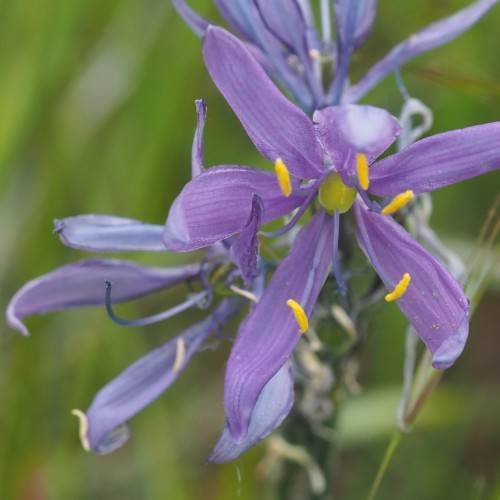
camas
Camassia spp. and cvs.
Also Known As - wild hyacinthCycle:
Herbaceous Perennial
Watering:
Average
Hardiness Zone:
3
Flowers:
Flowers In Spring
Sun:
Part sun/part shade
Soil:
Well-drained
Fruits:
Fruits Ready In Fall.
Leaf:
Yes
Growth Rate:
Low
Drought Tolerant:
Yes
Salt Tolerant:
Yes
watering
Camas should be watered once every 2 weeks or so, depending on the weather and the plant's specific requirements. Water deeply, providing about 2 inches of water, allowing the soil to dry out slightly between watering. During peak growing season, camas may need to be watered more often, as often as once a week. During the winter, reduce watering to once every few weeks.
sunlight
Camas (Camassia spp. and cvs.) require full sun to thrive, which means 8-10 hours of direct sunlight every day. This is usually possible in the summer months when temperatures are higher and the days are longer. However, during the winter, the sun is lower in the sky and a plant may only receive 6 hours of direct sunlight per day. For most types of camas to thrive, the evening should also be quite bright, with diffused sunlight lasting until sunset. If the plant is located in a shady area, it may need to be moved to a sunnier spot, especially during the winter months. In general, camas plants should be watered deeply 1-2 times per week. In hot, dry weather, they may need to be watered more often. They also benefit from feeding occasionally with a balanced fertilizer.
pruning
Camas (Camassia spp. and cvs.) should be pruned once or twice a year, usually between late spring and early summer and then in late summer or early fall. Begin pruning by removing any dead, diseased, or damaged branches and stems. You can also remove any branches that interfere with the desired shape of the plant. If necessary, prune back tall or unruly stems to keep the plant at a desired size. To promote blooming, prune back any secondary stems that have produced blooms in the current year. Finally, prune any stems that have seeded, as they will not produce blooms in the future.
